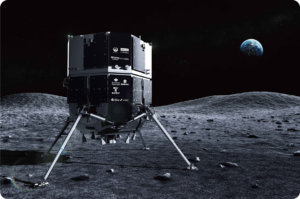Japanese Lunar Lander Hakuto-R M1 Failed Due to Software Error
The Japanese company ispace released its analysis today of why the Hakuto-R M1 lunar lander crashed on the lunar surface. In short, a software error told the lander’s automated systems that it was on the surface when in fact it was still at 5 kilometers altitude. Company officials said they will use this as a learning experience as they move forward with the next two scheduled missions in 2024 and 2025.
In a press release and a media briefing today, ispace founder and CEO Takeshi Hakamada and other company officials explained the factors that led to the failure in some detail.
Launched on December 11, 2022 on a SpaceX Falcon 9 rocket, the mission was going as planned until the final moments on April 25, 2023 EDT (April 26 in Japan).

The lander’s estimated altitude set in advance and its actual altitude measured by onboard sensors were different by several kilometers after the spacecraft passed over the rim of a crater.
“The onboard software determined in error that the cause of this discrepancy was an abnormal value reported by the sensor, and thereafter the altitude data measured by the sensor was intercepted. This filter function, designed to reject an altitude measurement having a large gap from the lander’s estimation, was included as a robust measure to maintain stable operation of the lander in the event of a hardware issue including an incorrect altitude measurement by the sensor.” — ispace press release
As the lander continued its descent from the 5 kilometer altitude it used up its propellant and then made a free-fall to the surface. A group of amateur radio enthuastists had earlier released their analysis that it ran out of fuel based on tracking the lander’s telemetry.
The ispace team cited a February 2021 decision to change the landing site as a contributing factor.
“This modification influenced the verification and validation plan despite numerous landing simulations carried out before the landing. ispace as the mission operator maintained overall program management responsibility and took into account the modifications in its overall analysis related to completing a successful mission. It was determined that prior simulations of the landing sequence did not adequately incorporate the lunar environment on the navigation route resulting in the software misjudging the lander’s altitude on final approach.” — ispace press release
In the end, Hakuto-R M1 crashed onto the lunar surface with the United Arab Emirates’ 10 kilogram Rashid rover and a baseball-sized “transformer” rover developed by Japan’s space agency, JAXA, and the toy company Takara Tomy. NASA’s Lunar Reconnaissance Orbiter, which has been orbiting the Moon since 2009, spotted the debris. NASA’s Goddard Space Flight Center released before and after images of the crash site on Tuesday.
Our Lunar Reconnaissance Orbiter camera has imaged the impact site of the ispace HAKUTO-R Lander, which experienced an anomaly on April 26 during its landing attempt. https://t.co/GvggIeEZt1 pic.twitter.com/EBVlOUZ3FN
— NASA Moon (@NASAMoon) May 23, 2023
The ispace team remains resolute in their motto “Never Quit the Lunar Quest,” saying they will incorporate the lessons learned into their next missions. Work on Missions 2 and 3, scheduled for launch in 2024 and 2025, has already begun and since the problem is software, not hardware, they do not anticipate delays.
They said at the media briefing today there is no significant impact to their financial situation because of the failure. The lander was insured by the Mitsui Sumitomo Insurance Company, although they could not disclose details of the arrangement while the situation is under review.
Hakuto-R M1 was the first commercial spacecraft to land on the moon, albeit unsuccessfully, and apparently the first lunar spacecraft to be insured.
User Comments
SpacePolicyOnline.com has the right (but not the obligation) to monitor the comments and to remove any materials it deems inappropriate. We do not post comments that include links to other websites since we have no control over that content nor can we verify the security of such links.